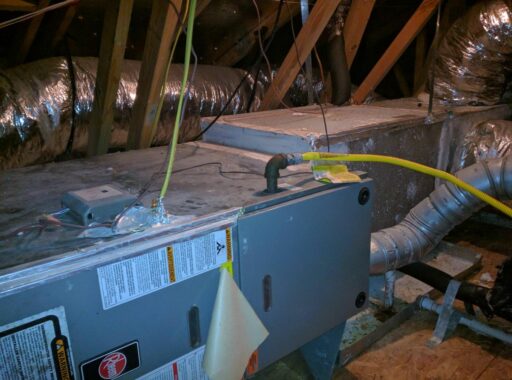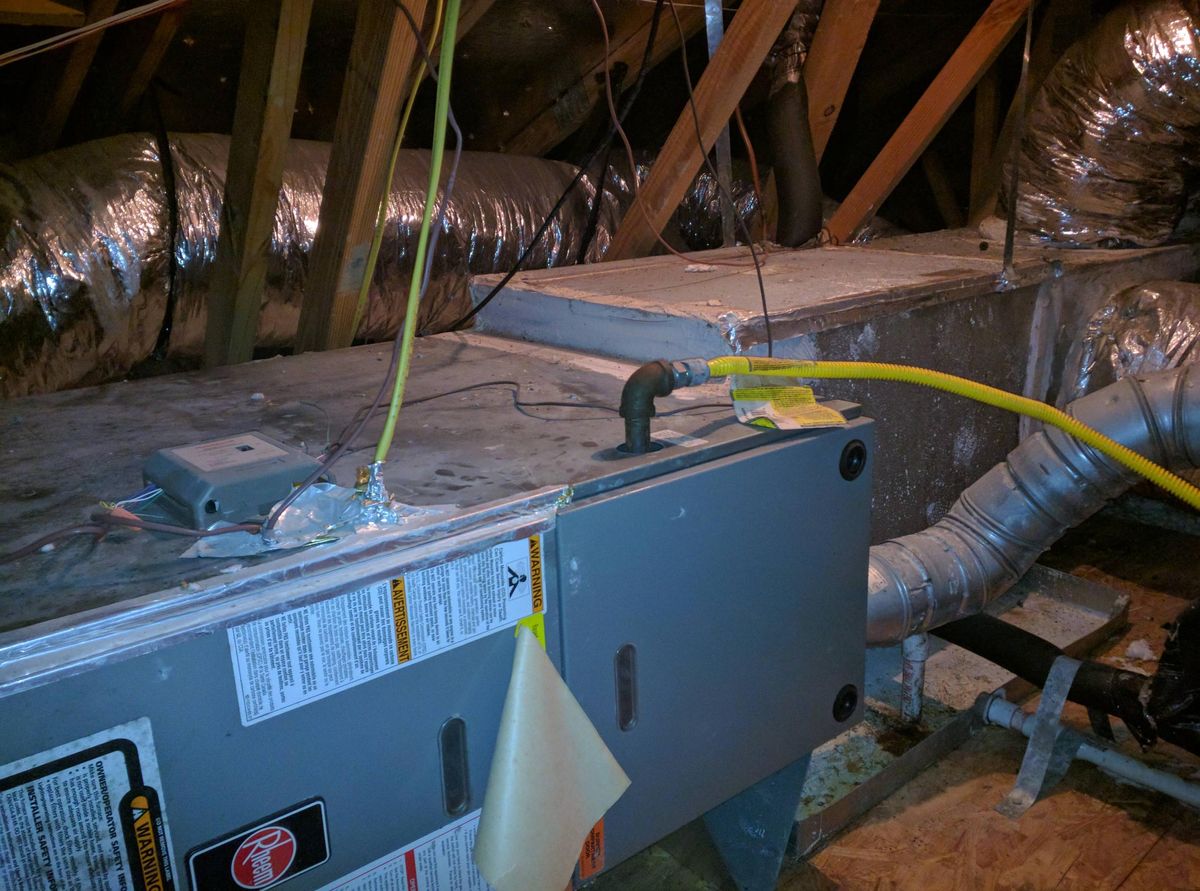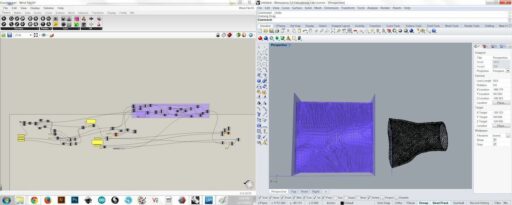Choosing the right HVAC contractor is crucial for ensuring comfort, efficiency, and reliability in your Ohio home. This guide aims to provide you with the essential information and practical tips needed to make an informed decision when selecting an HVAC contractor that best suits your home needs.
Key Takeaways
- Understand the different types of HVAC systems and key components, including the importance of SEER ratings, to determine what’s best for your home.
- Evaluate potential HVAC contractors based on their licensing, certifications, experience, and reputation, as well as customer reviews and testimonials.
- Request detailed estimates and understand the full scope of work, including cost breakdowns, and explore financing and rebates available in Ohio.
- Prepare for HVAC installation by conducting a home evaluation and load calculation to choose the most appropriate system, and know what to expect on installation day.
- After installation, ensure you have a clear understanding of warranty and service agreements, follow regular maintenance tips, and learn how to troubleshoot common issues.
Understanding HVAC System Basics

Types of HVAC Systems
When selecting an HVAC system for your home, it’s crucial to understand the different types available. Central air conditioners are common in Ohio, providing cooling throughout the house via a system of ducts. For heating, furnaces and heat pumps are prevalent, with the latter being particularly energy-efficient.
Ductless mini-split systems offer a versatile solution for homes without ductwork, allowing for individual room control. Meanwhile, the HVAC industry advances with high-efficiency systems, smart technology integration, and predictive maintenance. The Plumbing-Heating-Cooling Contractors Association (PHCC) is at the forefront of this transformation, emphasizing sustainability and aligning with customer expectations.
It’s essential to consider the specific needs of your home, such as size, layout, and climate, to determine the most suitable HVAC system. This decision will impact not only your comfort but also your long-term energy costs.
Key Components to Consider
When selecting an HVAC system, it’s crucial to understand the key components that will affect performance and efficiency. The system’s compressor, condenser, evaporator, and expansion valve are the heart of the operation, each playing a pivotal role in cooling and heating your home.
- Compressor: Pumps refrigerant through the system.
- Condenser: Releases heat from the refrigerant.
- Evaporator: Absorbs heat into the refrigerant.
- Expansion Valve: Regulates refrigerant flow.
Additionally, the thermostat serves as the control center, allowing you to set and maintain your desired temperature. It’s also important to consider the ductwork quality, as leaks or poor insulation can significantly reduce system efficiency.
Remember, a well-matched HVAC system not only provides comfort but also reduces energy bills and maintenance costs over time.
Finally, while evaluating HVAC components, consider the long-term satisfaction and maintenance that will be required. Quality materials and regular maintenance are key for ensuring your system runs smoothly for years to come.
Seasonal Energy Efficiency Ratios (SEER)
When selecting an HVAC system, the Seasonal Energy Efficiency Ratio (SEER) is a crucial metric to consider. It represents the cooling output of an air conditioner over a typical cooling season, divided by the energy it consumes in Watt-Hours. A higher SEER rating indicates greater efficiency and potential energy savings.
The SEER rating is not just a number; it’s a reflection of the system’s performance and long-term cost-effectiveness.
Understanding the SEER rating can help homeowners make informed decisions about their HVAC investments. Here’s a simple breakdown of what different SEER ratings mean for energy consumption and efficiency:
- SEER 13-15: Basic efficiency
- SEER 16-20: High efficiency
- SEER 21+: Super high efficiency
Keep in mind that while a higher SEER rating generally means lower energy bills, the initial cost of the system may be higher. It’s important to balance the upfront cost with the expected energy savings over the life of the system.
Evaluating HVAC Contractors

Licensing and Certification
When selecting an HVAC contractor in Ohio, it’s crucial to verify their licensing and certification. Ohio mandates state licenses for specialized trades, including HVAC, to ensure that contractors meet specific standards of knowledge and expertise.
Before hiring a contractor, ask for proof of their state license and check that it’s current. Additionally, look for certifications from reputable organizations such as North American Technician Excellence (NATE) or the Environmental Protection Agency (EPA). These certifications indicate that the contractor has received additional training and adheres to industry best practices.
It’s not just about compliance; proper licensing and certification are indicators of a contractor’s commitment to quality and safety.
Remember, working with an unlicensed contractor can lead to subpar work, potential safety hazards, and may even void manufacturer warranties on your HVAC equipment.
Experience and Reputation
When selecting an HVAC contractor in Ohio, consider the years of experience and the reputation they have established in the industry. A contractor with a long-standing presence is likely to have a track record of reliability and quality workmanship.
It’s essential to choose a contractor who not only has the technical expertise but also a solid reputation for customer service and satisfaction.
Look for contractors who have a history of handling projects similar to yours and check their references. Here’s a list of factors to consider:
- Proven track record of successful installations
- Positive feedback from previous customers
- Awards or recognitions in the HVAC industry
- Membership in professional associations
Remember, a reputable contractor will be transparent about their qualifications and happy to provide evidence of their accomplishments.
Customer Reviews and Testimonials
When selecting an HVAC contractor, customer reviews and testimonials offer invaluable insights into the quality of service and customer satisfaction. It’s essential to consider the experiences of others before making your decision. A useful resource for Ohio residents is the compilation of reviews on platforms like Angie’s List, where you can find a list of the top-rated HVAC companies in your area.
For instance, a title such as Top 10 Best HVAC Companies in Columbus, OH – Angie’s List suggests a curated selection of contractors based on customer feedback. Here’s a quick guide to interpreting reviews:
- Look for patterns in feedback, both positive and negative.
- Pay attention to how companies respond to criticism.
- Consider the number of reviews; more feedback can indicate reliability.
- Check for mentions of specific services that align with your needs.
Remember, while reviews can be a powerful tool, they should be one of many factors in your decision-making process. Personal recommendations and direct consultations also play a crucial role.
Cost and Financing Options

Getting a Detailed Estimate
When considering HVAC installation, obtaining a detailed estimate is crucial. Ensure that the estimate includes all costs, such as equipment, labor, and any additional fees. This transparency will help you avoid unexpected expenses and compare quotes effectively.
- Request itemized estimates from multiple contractors.
- Verify that the estimate covers the entire scope of work.
- Check for any potential hidden costs, like permits or disposal fees.
It’s also beneficial to use resources like the ‘HVAC Replacement Cost Calculator‘ to get a ballpark figure of what you might expect to pay based on your location and specific needs. Remember, the lowest quote may not always equate to the best value, so consider the contractor’s experience and reputation as well.
A comprehensive estimate not only prepares you for the financial aspect of the project but also sets a clear expectation of the services to be provided.
Understanding the Scope of Work
When you’re ready to hire an HVAC contractor in Ohio, it’s crucial to understand the scope of work that will be involved in your project. This includes a detailed breakdown of the tasks to be completed, the materials needed, and the timeline for the project. Ensure that everything is clearly outlined to avoid any misunderstandings or unexpected costs later on.
Before finalizing the agreement, review the scope of work with your contractor to confirm that all your needs are covered. Here’s a list of items you should expect to see detailed in the scope of work:
- Installation or replacement of HVAC units
- Ductwork modifications or installation
- Electrical work associated with the HVAC system
- Any necessary permits and inspections
- Cleanup and disposal of old equipment
It’s important to have a clear and comprehensive scope of work to ensure the project is completed to your satisfaction and within the agreed-upon budget and timeframe.
Financing and Rebates Available in Ohio
Navigating the financial aspects of HVAC installation can be as complex as understanding the system itself. Ohio residents have access to various financing options and rebates that can significantly reduce the upfront costs. It’s important to explore all available avenues to ensure you’re getting the best deal.
- Energy-Efficient Rebates: Many utility companies in Ohio offer rebates for installing energy-efficient HVAC systems. These rebates can lower the initial investment and promote long-term savings.
- Financing Programs: Some contractors provide financing plans that make it easier to manage the costs over time. Always read the fine print to understand interest rates and payment terms.
- Government Incentives: Federal and state tax credits may be available for qualifying systems. Check with a tax professional or the Energy Star website for the latest information.
When considering financing options, it’s crucial to compare the long-term costs with the potential energy savings. A lower monthly payment might seem attractive, but higher interest rates could negate the benefits of a more efficient system.
Preparing for HVAC Installation

Home Evaluation and Load Calculation
Before selecting an HVAC system, a thorough home evaluation and load calculation is essential. This process involves assessing the size of your home, insulation levels, window types, and other factors that affect heating and cooling needs. A precise load calculation ensures that the HVAC system is neither over- or under-sized for your space.
A proper load calculation takes into account various aspects of your home to determine the ideal HVAC system capacity required for optimal comfort and efficiency.
The load calculation typically includes the following steps:
- Examination of the home’s square footage
- Assessment of insulation quality and R-values
- Evaluation of window sizes, types, and orientations
- Analysis of local climate data
- Calculation of the home’s heat gain and loss
Understanding the outcome of the load calculation will guide you in choosing the right HVAC system that meets your home’s specific needs while being energy-efficient.
Choosing the Right System for Your Home
Selecting the appropriate HVAC system for your home is crucial for ensuring comfort and efficiency. Consider the size of your home, your climate, and your budget when making your decision. Here are some factors to keep in mind:
- Size of the Home: A system too large will cycle on and off frequently, causing wear and tear. Too small, and it won’t adequately heat or cool your home.
- Local Climate: In Ohio, where temperatures can vary widely, a system that handles both heating and cooling efficiently is essential.
- Energy Efficiency: Look for high SEER ratings to save on utility bills.
- Future Plans: If you plan to expand your home, consider a system that can scale with your needs.
When choosing an HVAC system, it’s not just about the initial cost. Think about long-term savings and comfort. An energy-efficient system may cost more upfront but can lead to significant savings over time.
Finally, consult with your HVAC contractor to find a system that fits your specific needs. They can provide valuable insights into the latest technologies and models that are best suited for your home.
What to Expect on Installation Day
Installation day is a significant step in upgrading your home’s comfort. Expect the HVAC installation team to arrive in the morning, typically after giving you a courtesy call. It’s common for a team of two to handle the installation, with the lead installer reviewing the job details with you before beginning work.
- The team will prepare the work area to protect your home.
- Old equipment will be removed and responsibly disposed of.
- New HVAC system components will be installed.
- The system will be tested to ensure proper operation.
During installation, it’s crucial to keep the communication lines open. Feel free to ask questions and express any concerns you may have. The installers are there to ensure your new system meets your expectations and operates efficiently.
After the installation, the team will clean up the work area, provide you with a rundown of the new system’s operation, and discuss any necessary maintenance or warranty information. Remember, a successful installation is the foundation for years of comfortable and efficient home heating and cooling.
Post-Installation and Maintenance

Warranty and Service Agreements
When selecting an HVAC contractor, it’s crucial to inquire about the warranty and service agreements they offer. These agreements are a testament to the confidence a contractor has in their work and the quality of the equipment they install.
A comprehensive service agreement can provide peace of mind, ensuring that any issues post-installation are addressed without significant additional costs.
Maintenance agreements are mutually beneficial. They guarantee homeowners consistent performance and efficiency from their HVAC systems, while contractors receive a steady stream of work and build long-term customer relationships. Here’s a quick breakdown of what to look for in a service agreement:
- Duration of the warranty and what it covers
- Frequency and scope of maintenance checks
- Response time for service calls
- Details on parts and labor costs
Remember, a well-maintained HVAC system can last longer and operate more efficiently, saving you money in the long run.
Regular Maintenance Tips
Regular maintenance is crucial for ensuring your HVAC system operates efficiently and has a long lifespan. Changing your air filters regularly is one of the simplest yet most effective ways to maintain your system. A clean filter improves air quality and system performance, and it should be replaced every 1-3 months, depending on usage and filter type.
- Inspect and clean vents and registers to ensure unobstructed airflow.
- Schedule annual professional inspections to catch potential issues early.
- Keep the area around your outdoor unit clear of debris and vegetation.
By adhering to a regular maintenance schedule, you can prevent small problems from becoming costly repairs and extend the life of your HVAC system.
Remember to also listen for unusual noises and monitor your system’s performance. If you notice anything out of the ordinary, don’t hesitate to contact a professional for advice or service.
Troubleshooting Common Issues
After your HVAC system has been installed, you might encounter some common issues that can often be resolved without the need for a professional technician. Being proactive in identifying and addressing these problems can save you time and money.
- Thermostat malfunctions: Ensure it is set correctly and has working batteries.
- Dirty filters: Replace or clean filters regularly to maintain airflow and system efficiency.
- Unusual noises: Investigate the source, as it could indicate a loose part or obstruction.
- Inconsistent heating or cooling: Check for blocked vents and make sure the system is balanced.
Remember, routine checks and simple fixes can prevent larger issues from developing. It’s important to familiarize yourself with your HVAC system’s operation manual for specific troubleshooting guidance.
If problems persist, it’s crucial to contact a licensed HVAC contractor. They have the expertise to diagnose and repair complex issues, ensuring your system operates at its best.
Conclusion
Choosing the right HVAC contractor in Ohio is crucial for ensuring your home’s comfort and energy efficiency. By taking the time to research credentials, read reviews, and compare quotes, you can make an informed decision that meets your specific needs. Remember, the cheapest option may not always be the best, and the value of experience and reliability cannot be overstated. Once you’ve selected a contractor, maintain open communication to ensure your project is completed to your satisfaction. With the right partner, you can enjoy a comfortable home environment all year round.
Frequently Asked Questions
How do I verify an HVAC contractor’s license and certification in Ohio?
You can verify an HVAC contractor’s license in Ohio by checking with the Ohio Construction Industry Licensing Board (OCILB) or by asking the contractor directly for their license information and verifying it through the state’s official website.
What factors should I consider when looking at an HVAC contractor’s experience and reputation?
Consider the number of years the contractor has been in business, the types of HVAC systems they specialize in, any awards or recognitions they have received, and feedback from previous customers through reviews and testimonials.
How can I obtain customer reviews and testimonials for an HVAC contractor?
You can find customer reviews and testimonials on the contractor’s website, social media pages, or on third-party review platforms like Yelp, Google Reviews, or the Better Business Bureau (BBB).
What should be included in a detailed estimate from an HVAC contractor?
A detailed estimate should include a breakdown of all costs, including equipment, labor, any additional services, potential energy efficiency rebates, and a timeline for the work to be completed.
Are there any financing or rebate programs available for HVAC systems in Ohio?
Yes, there are often financing options and rebate programs available through local utility companies, manufacturers, or state programs in Ohio. It’s important to ask your contractor about any current offers that could apply to your installation.
What does regular maintenance for an HVAC system typically involve?
Regular maintenance usually includes cleaning or replacing air filters, inspecting and cleaning ducts, checking the thermostat settings, inspecting electrical components, and ensuring the system is operating efficiently and safely.





